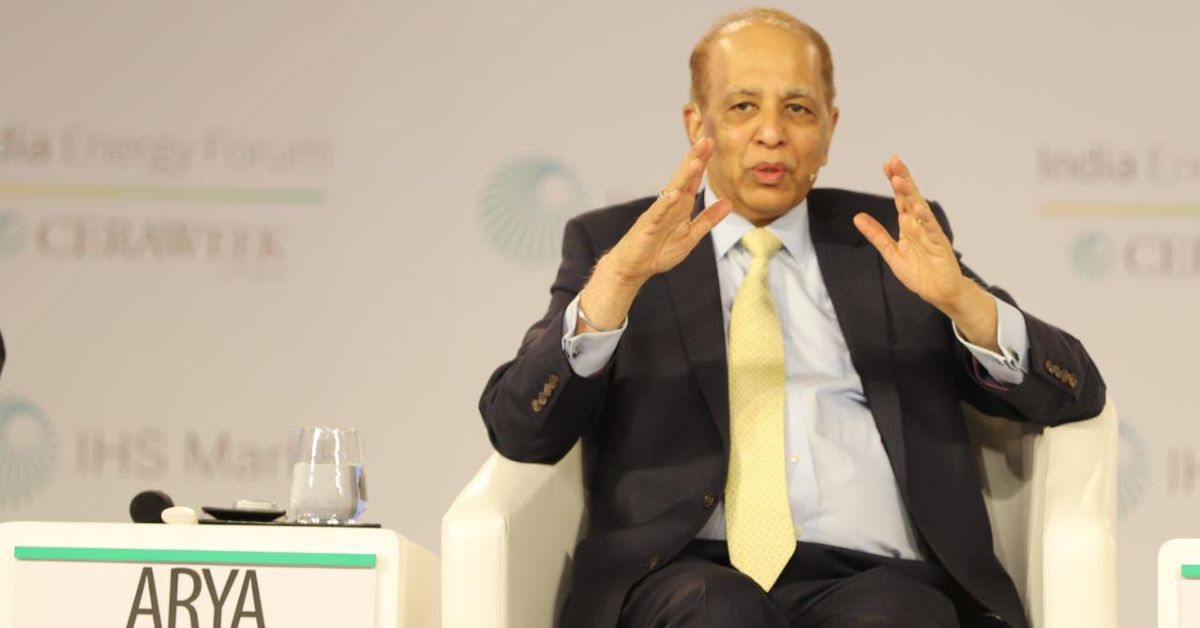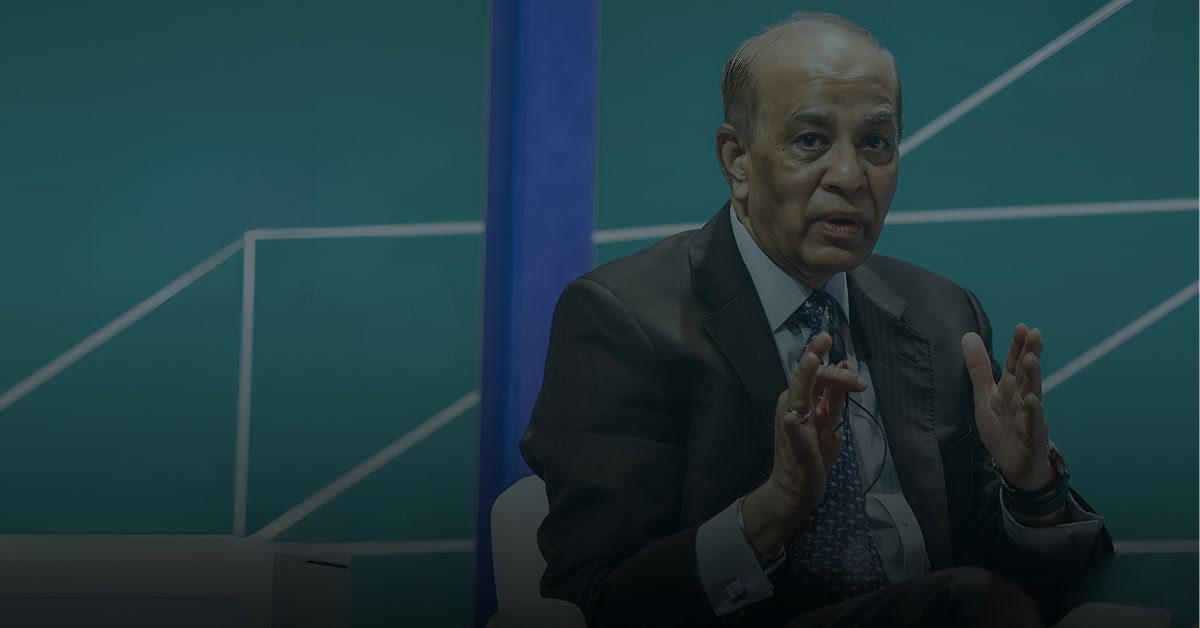DAVOS — In the midst of the World Economic Forum (WEF) in Davos, where leading minds converge to shape the future of global industries, we secured an exclusive interview with Dr. Atul Arya, Chief Energy Strategist at Standard & Poor’s Global, United States. Dr. Arya’s deep expertise and insights into the energy sector offered a fascinating view on the intricate dynamics that define the global energy market.
During our discussion, we explored the pivotal role of artificial intelligence (AI) and generative AI in transforming the energy sector. We discussed how these advanced technologies are reshaping traditional practices and delved into Dr. Arya’s vision for the transition to green energy. Beyond the global perspective, we also examined the distinct aspects of the GCC region’s move towards sustainable energy.
Excerpts:
What are the most likely headlines for 2024?
To start, let’s consider the developments at the end of 2023. There are two key points to highlight: the COP meeting in Dubai, which led to several significant agreements, including commitments to triple renewable energy capacity, double energy efficiency by 2030, and double nuclear power by 2050. Additionally, it was notable for bringing the oil and gas industry into the conversation about the energy sector’s future.
Despite global economic challenges like high interest rates and inflation, the demand for all types of energy continues to climb, driven by economic expansion. Production of oil, gas, and coal is increasing, alongside the growing deployment of renewable resources. This trend is our headline.
The advent of generative AI significantly enhances our ability to process and analyze vast amounts of data more efficiently.
Dr. Atul Arya, Chief Energy Strategist, Standard & Poor’s Global
In 2024, we expect to see continued growth in all energy forms from S&P Global Commodity Insights. We’re forecasting increased demand for oil, gas, and coal—though coal’s growth may decelerate compared to last year. Oil production is projected to reach around 1.3 million barrels, serving as a key data point. Moreover, we anticipate significant ongoing expansion in renewable energy sources. Additional challenges, such as trade issues related to reshoring for environmental reasons, which we’re discussing here in Davos, are also on the horizon.
Lastly, since we’re at Davos, it’s worth noting how AI, especially generative AI, is impacting the energy sector and climate science—a major focus this year.
How do you see AI and generative AI being used in the energy sector?
Currently, we’re just beginning to explore the potential of AI and generative AI in the energy sector. I’ll share two distinctly different examples. Firstly, at S&P, we analyze data to extract insights. The advent of generative AI significantly enhances our ability to process and analyze vast amounts of data more efficiently. This foundational application of generative AI is something we’re actively engaging in, with plans to expand its use intelligently. The energy sector professionals I’ve spoken with here share a palpable excitement about these prospects.
The GCC, with key players like Saudi Arabia, the UAE, Kuwait, and Qatar…plays a pivotal role in the energy transition.
Dr. Atul Arya, Chief Energy Strategist, Standard & Poor’s Global
Another emerging application is tied to the global push towards electrification and the evolution of smarter power grids. For instance, could generative AI be utilized to enhance grid responsiveness to fluctuating conditions? Additionally, there’s potential for generative AI to refine climate models, offering more accurate projections of climate change impacts. While these ideas are still in their infancy, the enthusiasm and innovative concepts being discussed promise significant developments, though realizing these ideas will undoubtedly require time to fully assess and implement.
How fast do you think the transition to green energy is occurring?
From an emissions standpoint, the transition is not happening quickly enough. It’s useful to view this transition through a dual lens: comparing progress in the developed world (OECD countries) against that in developing countries (non-OECD). In the United States and Europe, emissions are gradually declining, yet not at the pace required to offset increases in the developing world. As a result, global emissions continue to rise, underscoring the urgent need to “bend the curve” in developing regions—a formidable challenge.
Saudi Aramco…exemplifies [the GCC’s] substantial technological expertise with its advanced carbon capture and storage (CCS), hydrogen technology, and robust engineering capabilities.
Dr. Atul Arya, Chief Energy Strategist, Standard & Poor’s Global
Notably, the power sector has seen substantial advancements, with renewable energy deployments reaching 5000 gigawatts last year. This trend is expected to grow, but significant hurdles remain across other sectors, including transportation, industry, and residential. Discussions at Davos, including those about hydrogen and other innovations, highlight the need for dramatic reductions in emissions across non-power sectors. However, achieving these reductions will take time.
Do you believe the developed world can achieve much more?
The developed world is making significant strides. The COP agreements, for example, saw remarkable progress, including the commitment by 50 companies to reduce methane emissions—a significant step forward. Yet, the challenge of financing remains. The outcomes at COP fell short of the financial goals necessary for broader progress. The discussion now is overshadowed by high inflation and interest rates. High interest rates elevate the cost of borrowing, a burden already heavy in less affluent countries, while high inflation escalates the cost of initiatives. The hope is for a reduction in interest rates by year’s end.

Last year, the United States increased its oil production capacity. Is this concerning?
The dynamics of oil and gas production are complex. Last year, the United States ramped up its oil output to a record 13.2 million barrels per day, with expectations for further increases. In the global oil market, supply and demand are key influencers. As the United States boosts its production, OPEC often curtails its output. Additionally, Russia faces numerous restrictions on its exports. The market currently maintains equilibrium; without U.S. production, oil prices would likely soar. Similarly, U.S. natural gas production has played a crucial role in reducing costs in Europe. Despite last winter’s energy crisis in Europe, this year witnessed no gas shortage thanks to ample storage and supply. It’s also important to note that the United States has significantly lowered its emissions, mainly by transitioning from coal to natural gas.
How do you view the GCC’s energy transition, especially in the UAE and Saudi Arabia?
The GCC, with key players like Saudi Arabia, the UAE, Kuwait, and Qatar, particularly in the realm of natural gas, plays a pivotal role in the energy transition. Firstly, these nations boast substantial technological expertise. Saudi Aramco, the world’s largest single-company oil producer, exemplifies this with its advanced carbon capture and storage (CCS), hydrogen technology, and robust engineering capabilities in the circular economy.
The United States ramped up its oil output to a record 13.2 million barrels per day…The market currently maintains equilibrium; without U.S. production, oil prices would likely soar.
Dr. Atul Arya, Chief Energy Strategist, Standard & Poor’s Global
Significant advancements in CCS are forthcoming, with the UAE also emphasizing new technologies. Thus, the transition is not limited to oil and gas; the UAE and Saudi Arabia have burgeoning renewable energy sectors. The region’s suitability for solar PV, recognized and expected to grow, underscores its potential.
Additionally, the UAE’s robust nuclear program highlights its proactive approach. The country understands the necessity of maintaining balance in the global oil and gas markets, especially the oil market, and is committed to continuing this role.







